With a cool, refreshing flavor like a walk in the forest after a spring rain, mint and nettle tea is my new obsession. If you love this plant like I do, prepare to see them in a whole new light and embrace your inner elf. Today we'll go over how to make stinging nettle tea from fresh leaves or dried leaves, and a few ways to enjoy it.
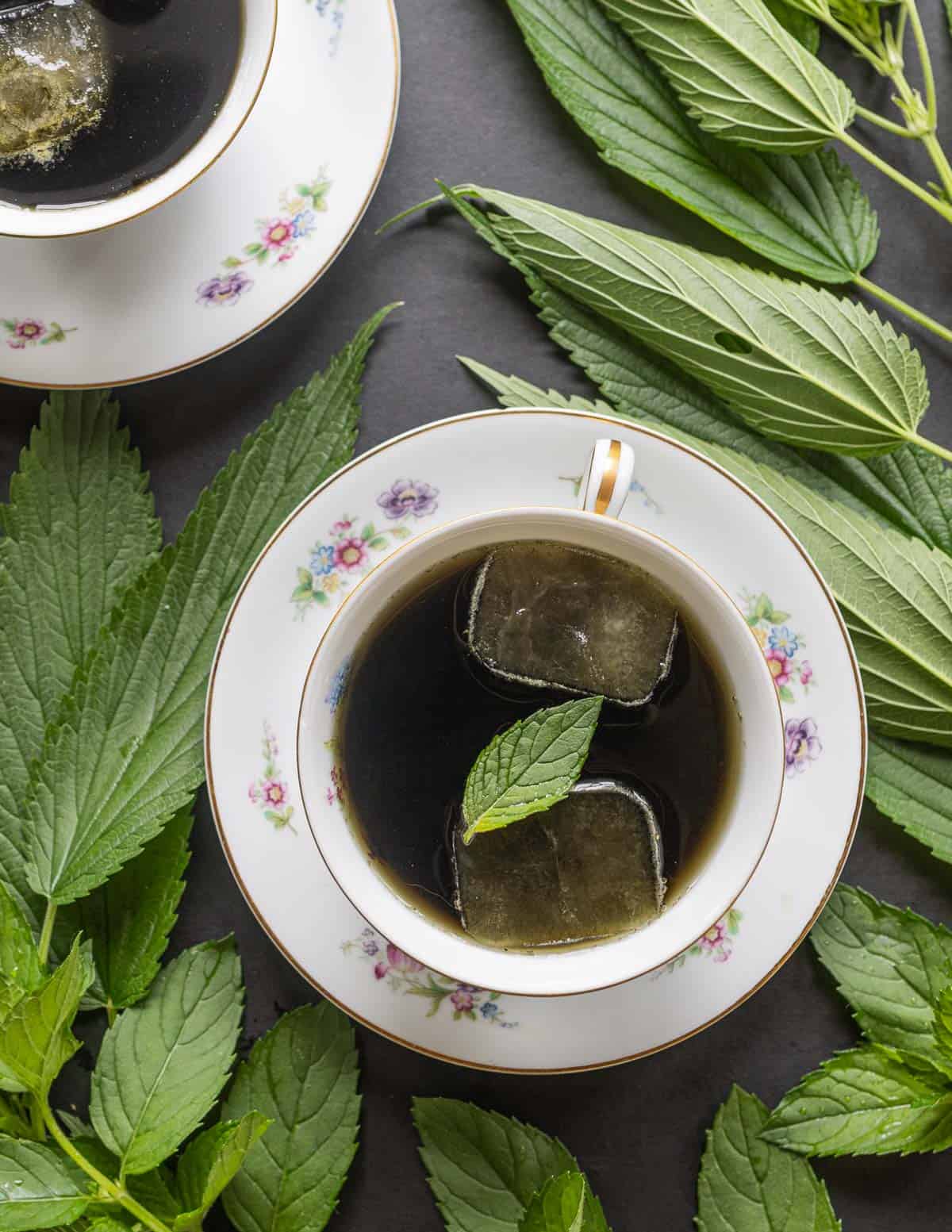
If you'd written off tea as a novelty for granola eating hippies like I did, the mint and nettle tea recipe in this post will have you happily drinking your words. First though, I should mention that common nettles (Urtica dioica) or likely any close relative in the Urticaceae are what will make the best tea.

I tried making wood nettle tea (Laportea canadensis) a few different ways and unfortunately it's nothing like it's cousin. Take a look at the two different teas made the same way with fresh plants below. The classic nettle tea tastes rich and woodsy, while the wood nettle was surprisingly mild and not really comparable.

How to Dry Nettles for Tea
One of the best things about making tea from nettle plants is that it allows foragers to extend the season as the plants don't need to be as tender as a vegetable.

Older plants will also have a stronger flavor. But, older plants will also concentrate oxalates, so those sensitive to them should probably stick to younger plants, or just the tender tops which are what I usually prefer.

You can harvest nettle plants any time, but early summer will give the best yield. I might cut one or two feet long sections then remove the leaves from the central stalk.

The tops of the plants can be dried whole (pictured below) and require less processing. You could also tie whole plants up and hang them in a windy, sunny spot to air dry.

The plants are dried in a dehydrator at around 90F for 24 hours. Keeping the temperature low will ensure they stay nice and green.
Once they're dry I pulse them in a food processor and sift through a colander to remove long stems. You can also crush the dried leaves by hand but you'll want to wear a mask-ask me how I know.



After drying and sifting the leaves can be stored in a jar in a pantry where they'll keep for years.
How to Make Nettle Tea
You can make the tea from fresh or dried leaves, and I'll go over both methods I've use. I've also had success making "cold-pressed tea" by adding herbs to cold water and infusing overnight.

Dried Nettle Tea
Tea made from dried nettle leaves is what most people will know as coops often sell organic dried nettle leaf in their bulk herb and tea section. To make it, I put about 2 tablespoons (or more) of dried leaves in a pot with a quart of simmering water, turn of the heat and let it infuse.

Unlike other teas that can become bitter or too strong after, say, 5 minutes of infusing, the sweet spot for me is around 10-20 minutes.

Fresh Nettle Tea
The first time I made a tea from fresh nettle leaves I poured hot water over very young plants and let it cool. The flavor was mild, and uninteresting.


Then, on a whim after cooking some nettle tops to eat I drank some of the cooking water. Surprised by the rich flavor, I sweetened a quart with mint and lemon, served it on ice, took a sip and burst out laughing it was so good.

Later I spoke with Sam Thayer and he told me he boils the plants, adding mint later during the cooking process and finishing with a touch of maple syrup. Our conversation confirmed my hunch that when making tea from the fresh plants, boiling, not infusing, will give the strongest flavor.
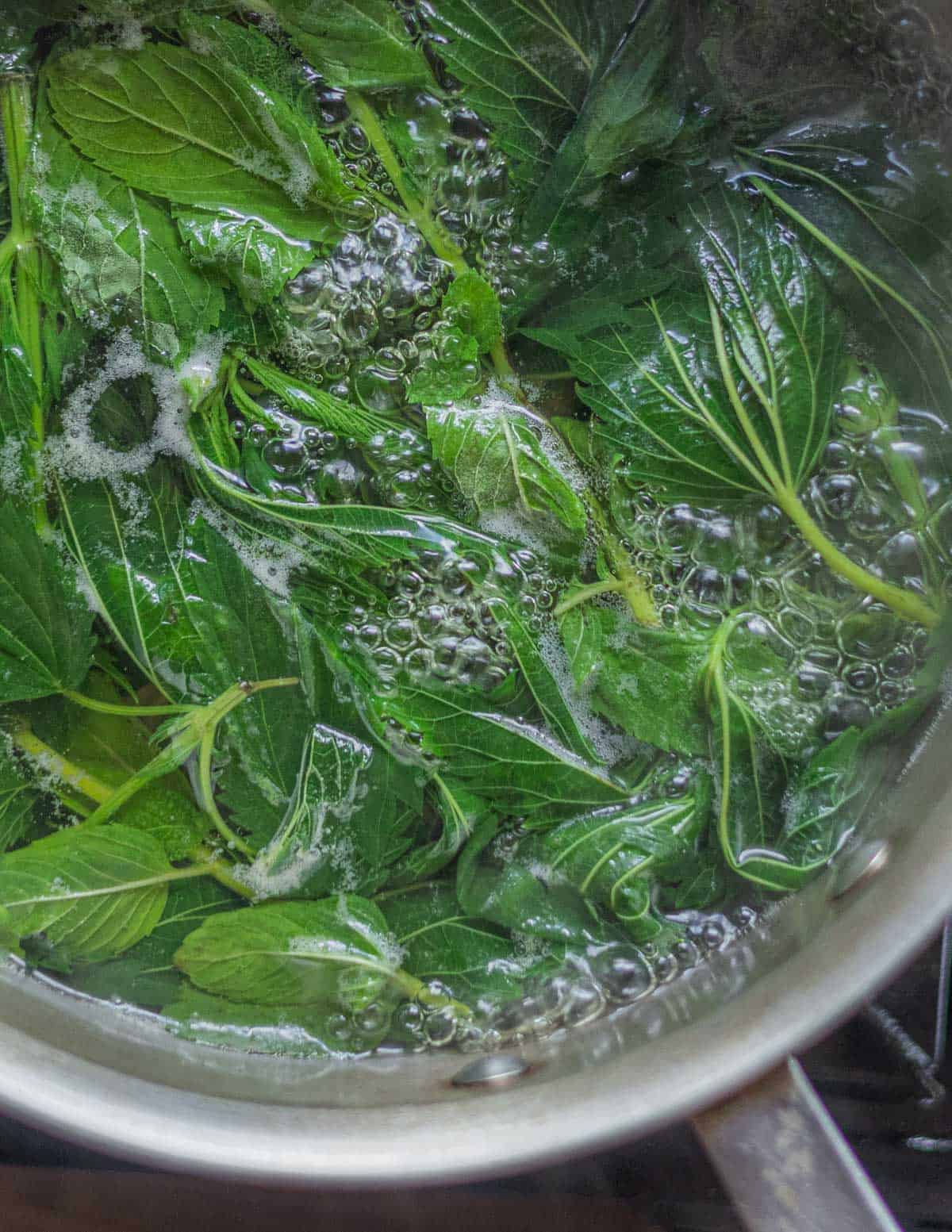
Technically speaking, boiled infusions of plants are a decoction, but tea reads better on a menu so I'm going with that.
Step-by-Step
For the fresh tea I recommend you try first, the nettles are boiled for a few minutes, then fresh wild mint is added and boiled for a shorter time. Sam said boiling the mint changes the taste slightly, giving the tea a flavor he compared to horehound (Marrubium vulgare).



When the tea is done I like to cool it for the strongest infusion, but It's good right away too. A bonus is that as the tea sits the the color changes. After a few hours in the fridge, the color deepens into a verdant green so saturated it looks black. The same polychromatism is noticeable when the plants are made into soup.

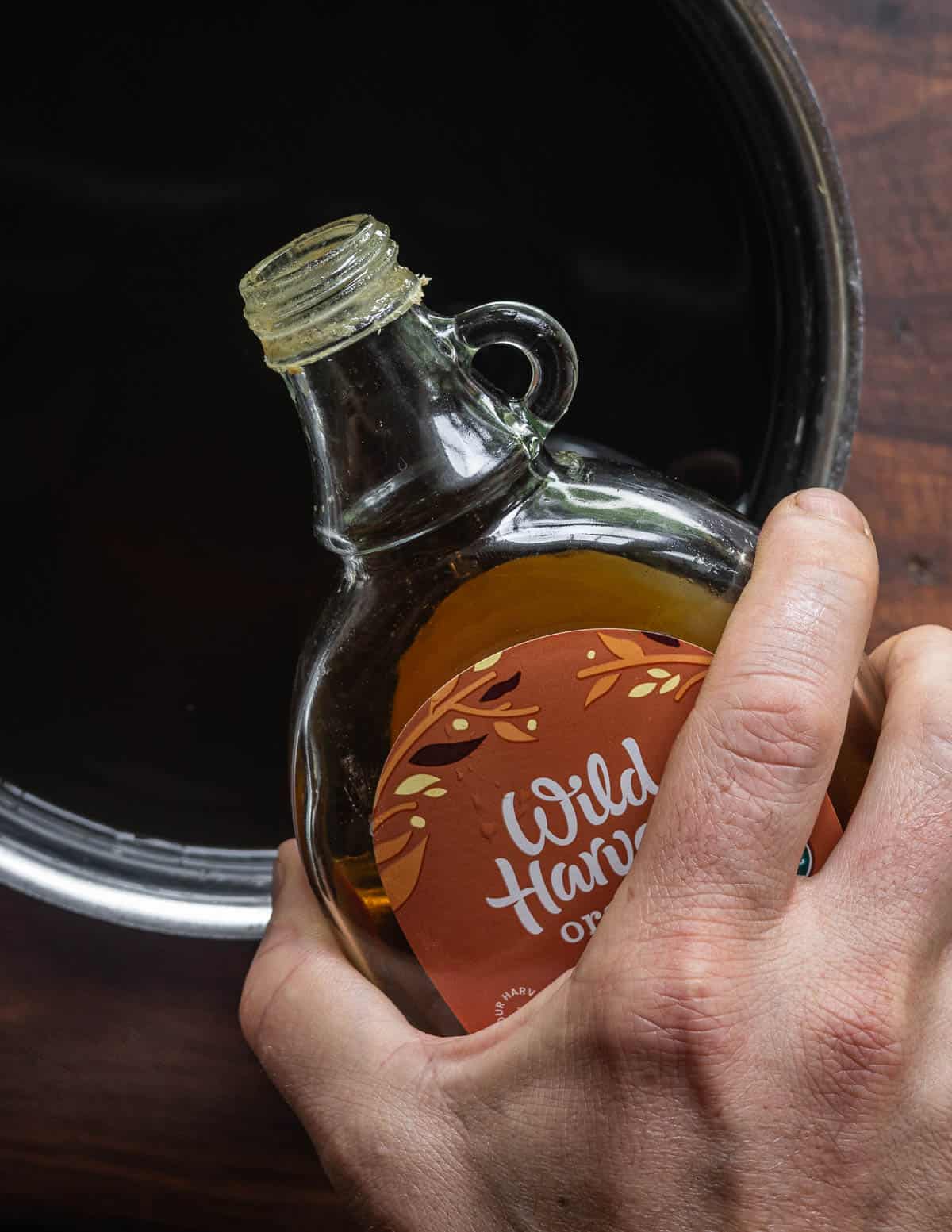
Served with a touch of maple syrup and a sprig of mint the cool, woodsy flavor will win over any skeptic. I've been serving it to people without telling them what it is first, and the immediate reaction is just: "wow, this is so good!".

Advantages of Nettle Tea
The plants are nutrient dense and richer in chlorophyll than any plant I know. Besides that they're also high in potassium, magnesium and iron and contain all essential amino acids. Nettle tea is also is caffeine free. The benefits of the tea (using the term loosely for this section) aren't limited to the kitchen. The plants have been used medicinally since ancient times, but some of the other uses might surprise you.
Nettle Fertilizer
Just like comfrey, the leaves are high in nitrogen and can be used to fertilize garden plants. To make the "tea" take fresh plants and weigh them down in a bucket, cover with water and leave them for a week or two. I've been making a by-product version with leftover boiled plants.
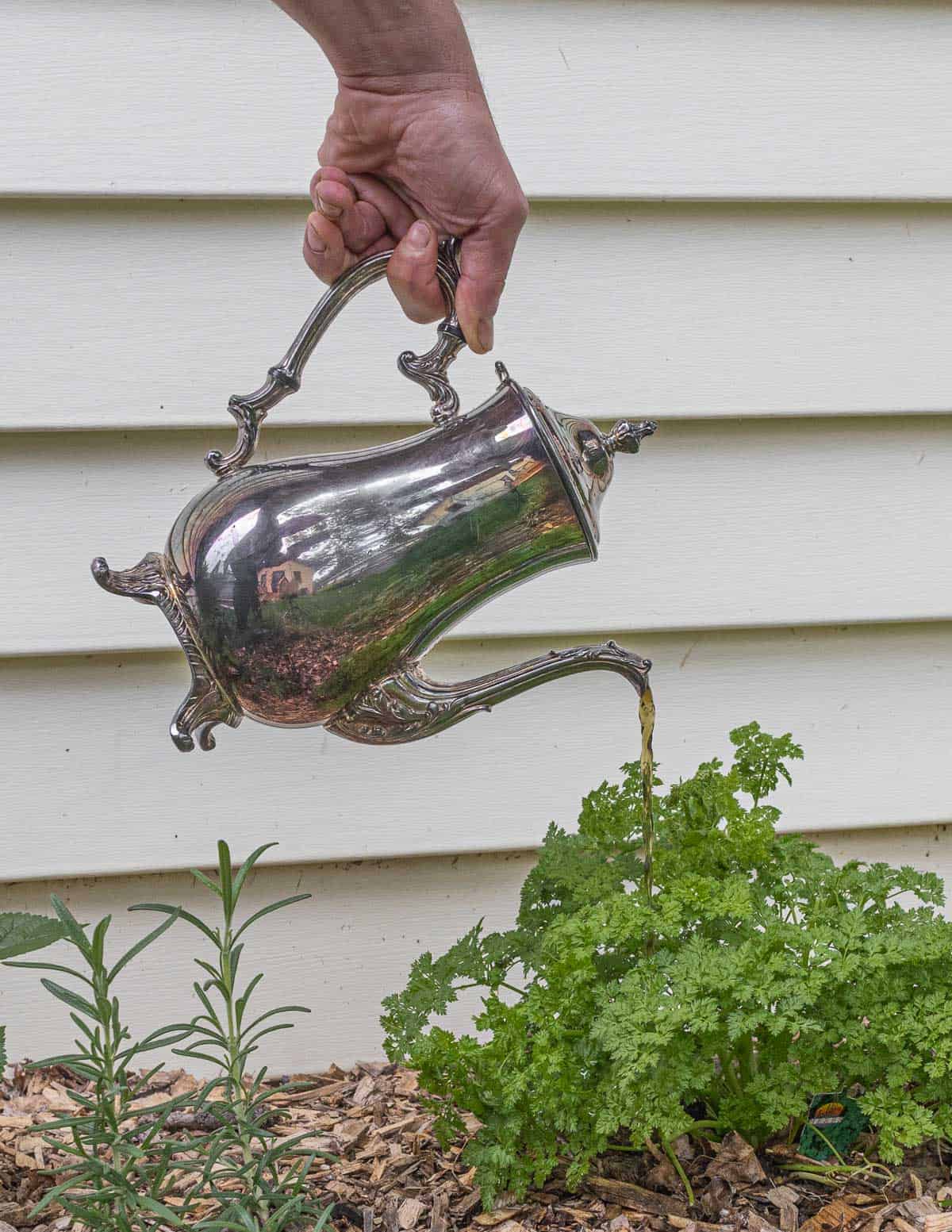
The tea you serve your plants will be a dark, bubbling witch's brew with an awful smell. It should be diluted 1 part of liquid to 10 parts water. Apparently it's best for older plants with developed root systems, although my chervil hasn't died yet.
Nettle Tea and Hair
I thought it was funny a few years ago when someone commented about rinsing their hair with nettle cooking liquid. But, after seeing it mentioned in Stephen Barstow's excellent book curiosity got the best of me. The reduced cooking liquid has a subtle mucilaginous quality to it and I can confirm it leaves hair silky smooth like conditioner.
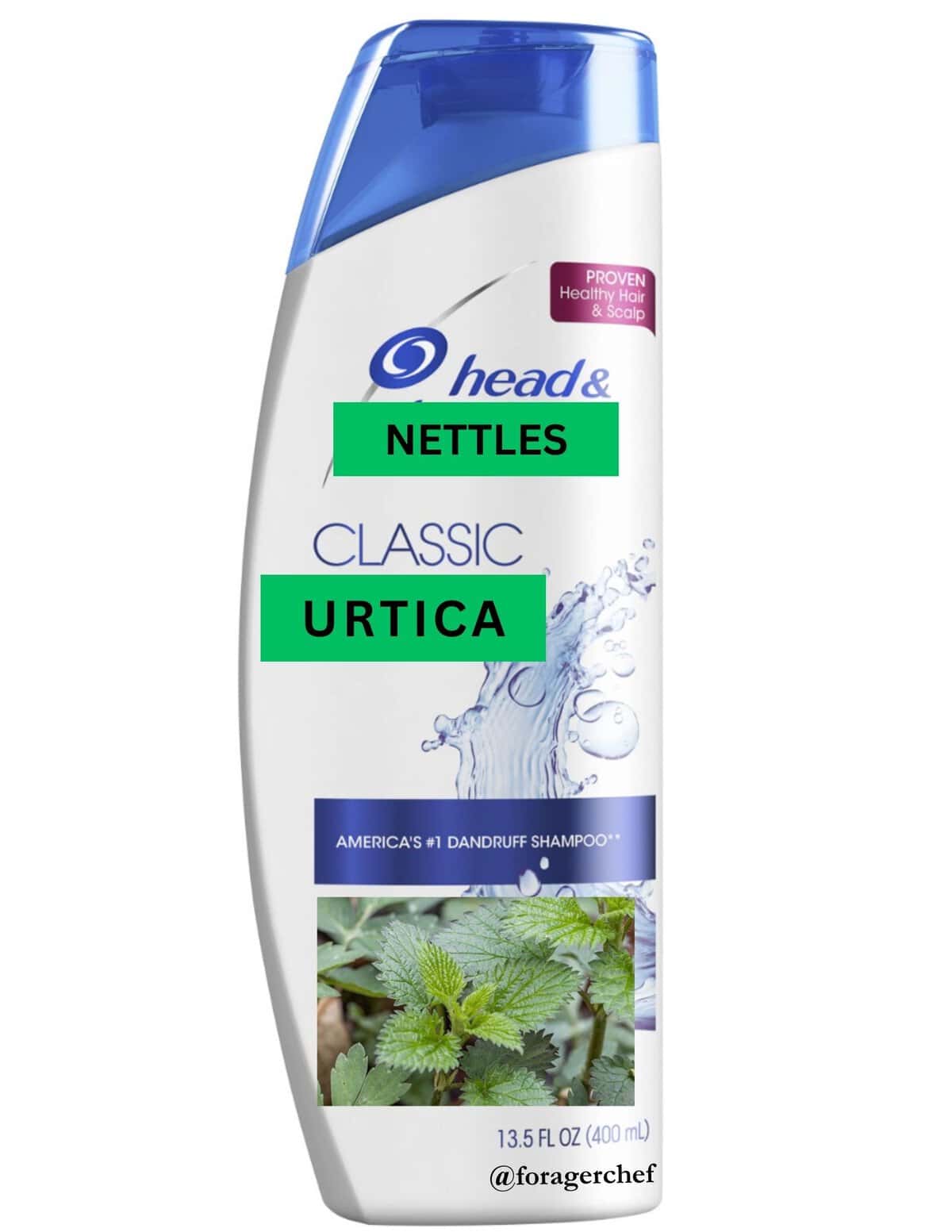
There's plenty of claims that it prevents dandruff, stimulates hair growth and lowers inflammation, but not a lot of data to back it up. I do see the appeal though, and the fact that there's a plethora of nettle shampoos available online is worth looking at. It makes a fun experiment.
Related Posts
Fresh Stinging Nettle Tea with Mint
Equipment
- 1 2 quart sauce pot
- 1 Strainer
Ingredients
Fresh Tea
- 2 oz fresh stinging nettle leaves or tender tops
- 3 5 inch sprigs (5 g) fresh mint
- Maple syrup or honey to taste, optional
- 8 cups water
- lemon wedges optional
Dried Tea
- 8 cups water
- ⅓ cup dried nettle leaves
- 1 tablespoon dried mint leaves
Instructions
Fresh Tea
- Bring the water to a boil, add the nettles and cook for 2 minutes.
- Add the mint sprigs and boil for a minute more.
- Put the pot in a sink of cold water to chill, then refrigerate. It's important to infuse the leaves in the tea for at least six hours or so for the strongest infusion.
- The next day, strain the tea, add maple syrup to taste and serve hot or chilled on ice. I like to add lemon to it when making iced tea.
Dried Tea
- Bring the water to a simmer in a pot, add the leaves, allow to infuse overnight or for at least six hours, then strain and proceed as above.
- Sweeten if you like and serve warm or chilled.


tb
Thanks for your helpful article. I’ve been experimenting with making nettle mint tea concentrate and then water bathing it to use through the summer. Do you know if there would be a benefit to using fresh vs. dried plants? Thanks!
Alan Bergo
Dried plants don't need to be boiled like fresh plants and they can be used when fresh plants aren't available or are too old / gone to seed. Other than that I can't really speak to different benefits there.
tom
Wow, your nettles don't sting? Well, pick some of ours and you will have hours of joy from their sting. You'll get even those nettle bumps over your skin.
Now, are we talking about the same plant? Can I make a tea out of those plants from Satan's kitchen?
Alan Bergo
That was an anomaly. Nettles in poor soil have less resources to put into making stingers, which are expensive in the plant world. It could also have been that they were hammered by rain. Either way it's unusual, but I also don't really mind the sting. Wood nettles are a different story.
Kt
I will be heading to the trout stream today, gathering up both plants, and trying this recipe. Thanks Alan !
Been finding any chants ? Soon! 😋🍄
Alan Bergo
Yep. Hank and picked a few yesterday. Looks to be a good year. Tons of pins.
Kathy
Wow, this was absolutely delicious! The flavor was much stronger after cooling like you suggest.
Hortense
Brilliant ideas for a beautiful plant! Thanks, Alan!
Michelle Friars
Great timing - I've been looking for something to do with later-in-the-season nettles. Dehydrating a bunch today!
Alan Bergo
Make sure to try the fresh version too. I’ve been drinking it as iced tea all week. 😋
phyllis bergo
I am trying to give up coffee, drinking lots of green tea with mint, Your idea sounds better!
Alan Bergo
It’s really good. I’ll have to bring some next time I see you!
Rose Dorman
Brilliant thank you
Amanda K
This made me start craving the fresh sage tea I make closely to this, which can have its own minty sensation. 🙂 I can’t wait to find some neetle to compare. Thank you!
Alan Bergo
Thanks Amanda. I’ve never had sage tea. Are you using regular garden sage or another variety?
Maria
Hey I love a good nettle recipe!
But after having a back and forth with a forest friend, I found some research that you probably should stick to younger plants even for tea (before flowering) since they build up in calcium oxalate which is bad for kidneys.. just an FYI since you mention they are great throughout the season
Alan Bergo
Yes that's good to note. I need to update the post with pictures of tender tops as that's what I really prefer to use.
Michelle Friars
Please do tell more! I'm have an excess of sage in my garden at the moment and have been looking for uses!